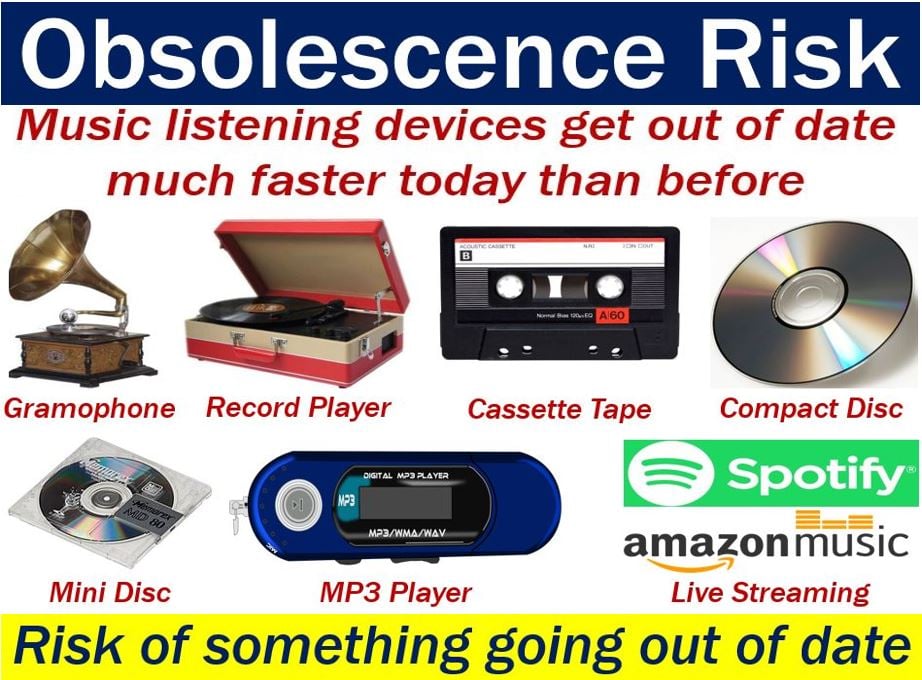Obsolescence risk – definition and meaning
Obsolescence risk refers to the risk of a company’s product, system, or technology becoming obsolete. If something is ‘obsolete’ it means it is out of date, i.e., we no longer use it. Obsolescence risk relates to a company’s loss of competitiveness in the market. The company loses competitiveness because it has something that has gone out of date. Lack of competitiveness harms profits.
Tech companies are especially vulnerable to obsolescence risk. As soon as any of their technology becomes obsolete, their revenues decline.
A tech company is a firm that focuses mainly on developing, manufacturing, and selling technology. For example, Apple, IBM, Oracle, and Lenovo are tech companies.
Obsolescence risk greater today
Most companies are better at developing and adopting applications than they are at getting rid of them. Consequently, many end up with a large, expensive portfolio of legacy applications.

The risk of ending up with obsolete products, technology, or systems today is considerably greater than it used to be.
New technology and products are emerging at a progressively faster rate. Company’s products used to take decades to become obsolete. Today, however, things are out-of-date within just a few years.
For example, consumers listened to music using gramophones, record players, tapes and cassettes for several decades. Compact disks and mini disks gave way to MP3 players, and then online music streaming over a much shorter period.
Economic growth and obsolescence risk
Obsolescence risk increases as GDP growth accelerates. GDP stands for gross domestic product. In other words, obsolescence is a necessary consequence of an innovative and thriving economy.
Obsolescence risk is a factor that every company faces to some degree. When firms decide how much to invest in new technology, they must factor in the risk of obsolescence.
When considering new technology, a company must determine whether it will remain superior long enough to be worth the investment.
Companies today must be ready to rapidly invest large amounts of money if a major product or service becomes obsolete.
However, predicting when obsolescence will occur is extremely difficult. Therefore, knowing how to budget accordingly is challenging.

